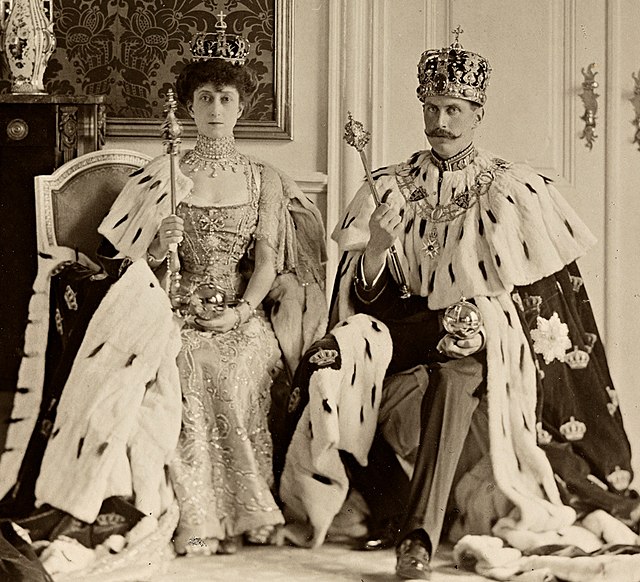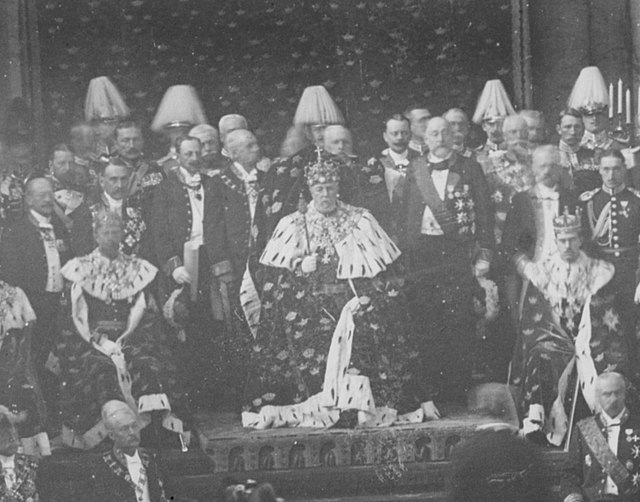Imperial Regalia of Japan
The Three Sacred Treasures are the imperial regalia of Japan and consist of the sword Kusanagi no Tsurugi (草薙劍), the mirror Yata no Kagami (八咫鏡), and the jewel Yasakani no Magatama (八尺瓊勾玉). They represent the three primary virtues: valour, wisdom, and benevolence. The actual historical status of these legendary treasures is unknown as they are intentionally kept from public view to symbolize authority.
Presentation of the sword Kusanagi no Tsurugi and the Yasakani no Magatama at the enthronement of Emperor Akihito, 1989
Regalia is the set of emblems, symbols, or paraphernalia indicative of royal status, as well as rights, prerogatives and privileges enjoyed by a sovereign, regardless of title. The word originally referred to the elaborate formal dress and accessories of a sovereign, but now it also refers to any type of elaborate formal dress. The word stems from the Latin substantivation of the adjective regalis, "regal", itself from rex, "king". It is sometimes used in the singular, regale.
Queen Elizabeth II with her regalia
King Haakon VII and Queen Maud of Norway with their regalia in 1906
King Oscar II of Sweden, his crown prince Gustaf (V) and grandson Gustaf (VI) Adolf in their crowns and coronets on a state occasion about 1900.
Emperor Pedro II of Brazil wearing elements of the Imperial Regalia. Detail from a 1872 portrait by Pedro Américo.





